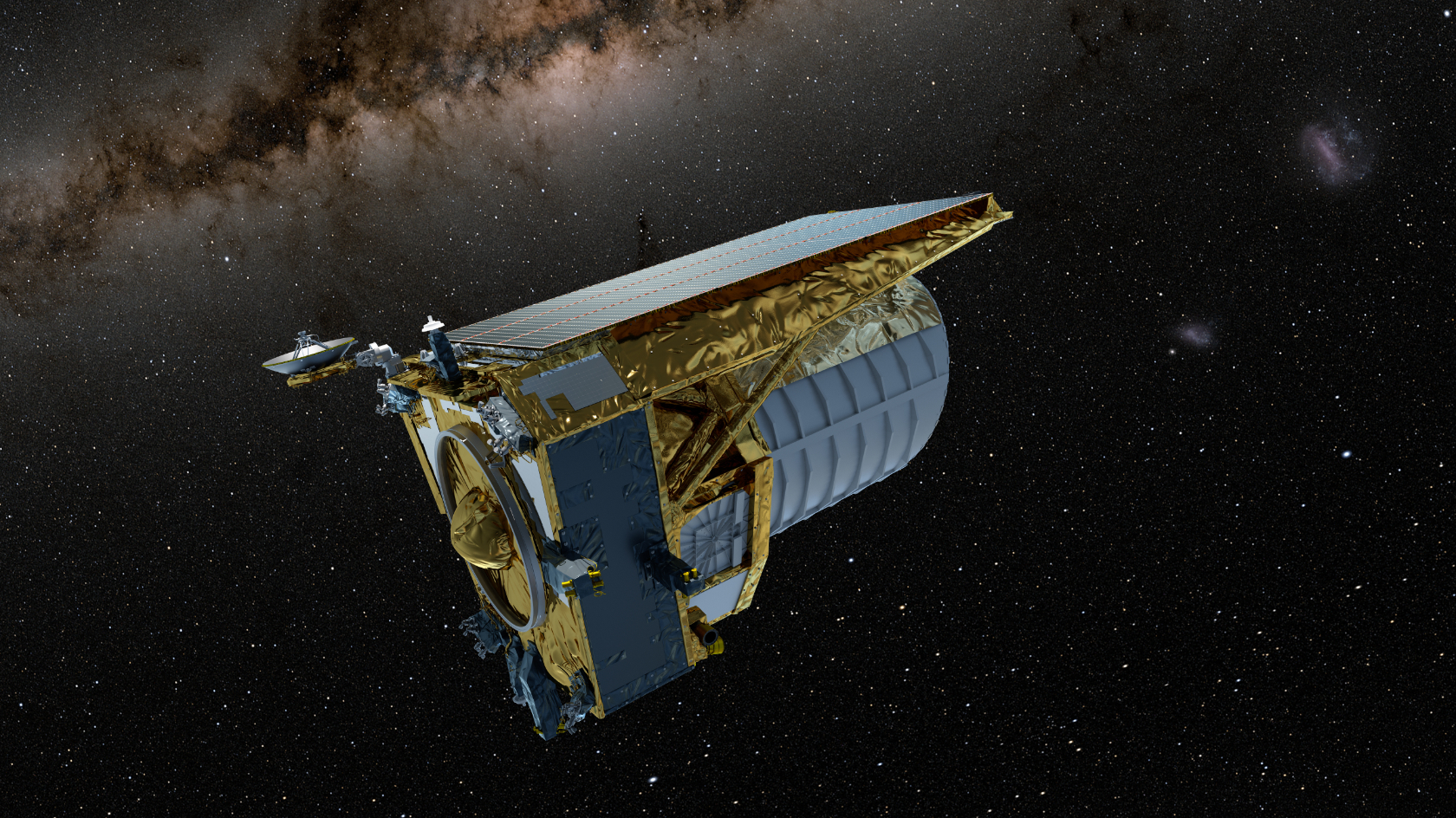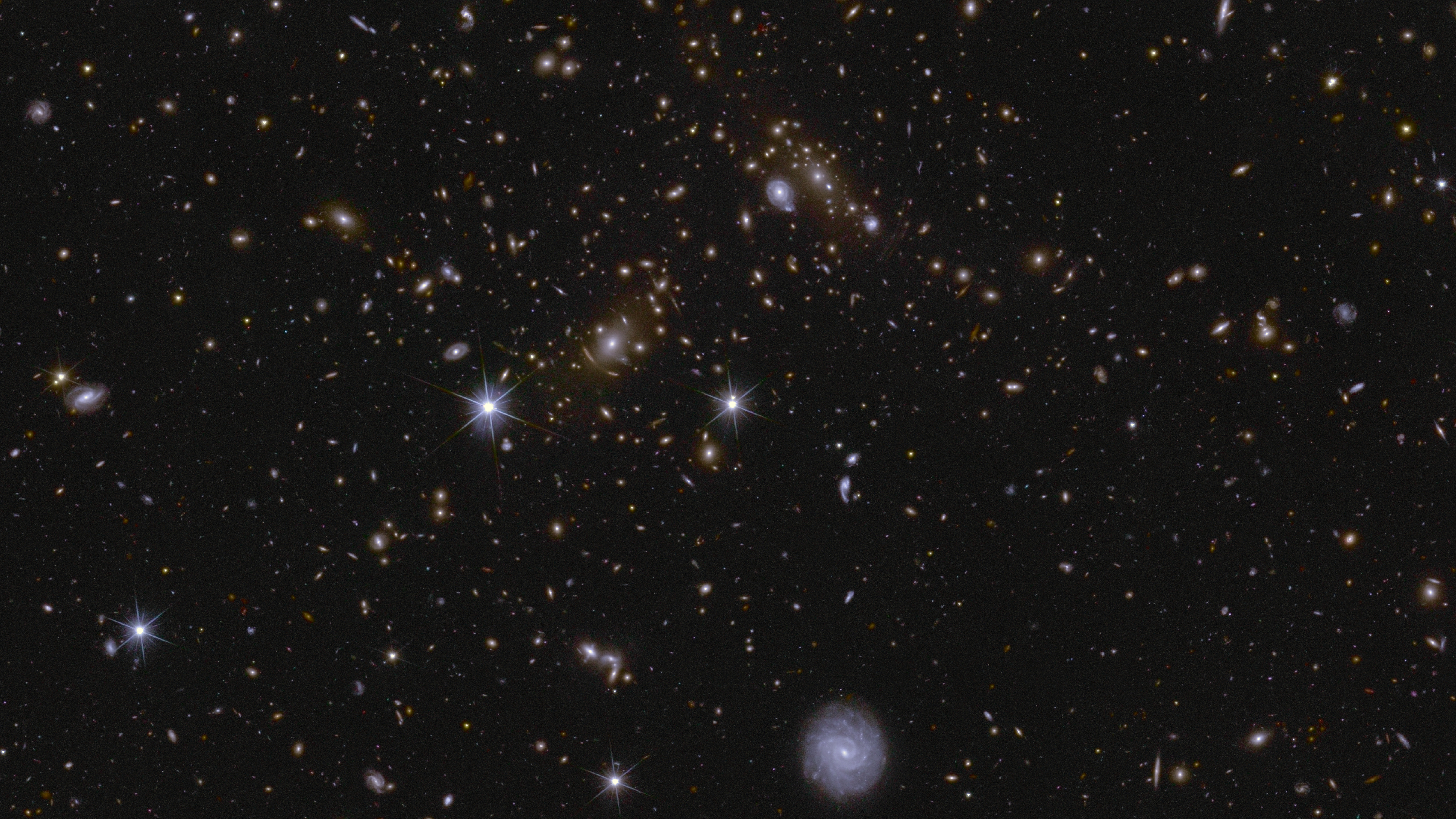Stunning Insights into the Origin of the Universe

On 19 March 2025, the European Space Agency’s (ESA) Euclid mission unveiled its first public data release, offering groundbreaking insights into the structure and evolution of the Universe. Among the millions of galaxies observed Euclid provided a detailed preview of cosmic web structures, gravitational lenses, and galaxy classifications. Swiss research institutions play pivotal roles in the Euclid mission, contributing critical technology, advanced algorithms, and computational infrastructure, significantly enhancing our understanding of dark matter and dark energy.
Euclid’s mission opens a new cosmic chapter: ESA's Euclid mission, launched in July 2023, aims to map over a third of the sky to investigate the mysterious dark Universe. This data release includes observations of 26 million galaxies and identifies hundreds of gravitational lens candidates, showcasing the mission's power in astrophysical and cosmological research. Among these is a remarkable discovery - a complete Einstein ring, an extraordinary example of gravitational lensing, which vividly demonstrates Euclid's scientific potential. Artificial intelligence and citizen science are integral in classifying galaxy morphologies, setting the stage for profound cosmological discoveries.
University of Zurich develops new state-of-the-art simulations

The Institute for Astrophysics at the University of Zurich (UZH) is one of the leading centres for large-scale numerical simulations within the Euclid mission. Members of the institute, including Prof. Joachim Stadel and Dr. Doug Potter, developed and optimised simulation software capable of surpassing the trillion-particle threshold for the first time. This record-breaking Euclid Flagship simulation, carried out on the Swiss supercomputer "Piz Daint" at the Swiss National Supercomputing Centre (CSCS), represents the distribution of matter in the universe with unprecedented accuracy.
The Zurich simulations were indispensable for developing and validating Euclid's complex data analysis methods—a crucial step since the analysis pipeline had to be finalised before actual observational data became available. Additionally, Dr. Aurel Schneider from UZH co-leads Euclid's cosmological simulations working group, scientifically coordinating and supervising these sophisticated computations.
In preparation for upcoming data releases, the University of Zurich is currently developing new state-of-the-art simulations to explore various scenarios for dark energy and dark matter. Through these efforts, UZH makes a significant contribution to the overarching goal of the Euclid mission: uncovering the true nature of the dark universe.
University of Geneva determines the distance indicators of galaxies
The University of Geneva (UNIGE) astrophysicists and cosmologists were instrumental in shaping the Euclid's scientific key goals. Together with the Swiss company APCO Technologies, they led the construction of part of the VIS high-resolution imager, a very high precision and very high-reliability shutter that drives the scientific exposures of the instrument. UNIGE is also in charge of key algorithm development and implementation for the accurate determination of distance indicators of galaxies both for the main cosmological science and for the study of galaxy evolution. It has developed the software to detect the billions of sources in the Euclid survey and characterize their shapes. UNIGE is also one of the ten data centres where the processing of Euclid data takes place, thanks to its high-performance computing (HPC) infrastructure.
In his paper Dr. Marco Tucci presents the pipeline used for the estimation of distance indicators and physical properties sources in the Euclid Q1 release. Dr. Federica Tarsitano led the selection of red quasars, considered a key phase in the co-evolution of galaxies and their central black holes, and act like cosmic chameleons as they hide behind thick clouds of dust that make them appear red. Her work shows that Euclid’s superior depth and resolution improve the identification of sources among the reddest and most obscured in the Universe.
FHNW explores Jackpot lenses
The School of Computer Science of the University of Applied Sciences Northwestern Switzerland (FHNW) leads the development of the Euclid HPC framework, a sophisticated software stack running across nine supercomputers located in Europe and the USA. All Euclid data is orchestrated and processed using this software stack, making it the backbone of the Euclid Ground Segment processing. This software, developed by the team led by FHNW computer scientist Simon Marcin, ensures efficient number crunching for the extensive algorithms used by Euclid scientists, enabling timely analysis of the mission’s vast datasets.
Under the lead of Dr. Karina Rojas, FHNW is also part of the strong lens finding team, which discovered over 500 new gravitational lens candidates among a million galaxies, thanks to the combined power of artificial intelligence and citizen science. Notably, the team identified four exceptional double-source lenses, known as "Jackpot" lenses. This achievement turned our cosmic haystack into a small treasure trove that will keep growing in the coming years.